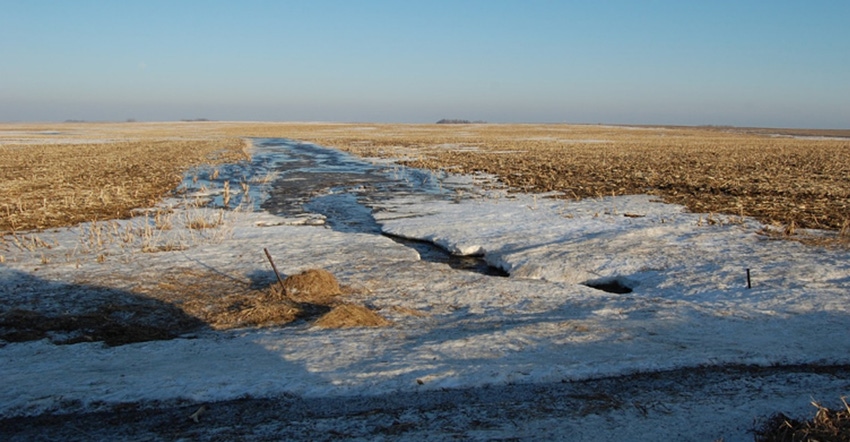January 3, 2019

Iowa law prohibits application of liquid manure from larger confinement livestock operations between Dec. 21 and April 1 if the ground is snow-covered, unless the manure can be properly injected or incorporated, or if an emergency exemption is granted. Exemptions must be applied for and granted by the Iowa Department of Natural Resources.
Iowa law regulating winter application of manure only applies to surface application. Injecting manure into soil during this specified period is not illegal. However, there are other considerations to keep in mind.
When manure is applied at the surface to snow-covered or frozen ground, there is an increased risk for manure and nutrient runoff into Iowa’s waters.
“Due to this increased risk, winter manure application of manure to the soil surface, whether it’s liquid manure or solid manure, is not recommended,” says Dan Andersen, an Iowa State University Extension ag engineer who specializes in manure management.
Law affects confinements with liquid manure
Iowa law prevents confinement livestock facilities with 500 or more animal units from applying liquid manure on the surface of ground with an inch of snow or a half-inch of ice from Dec. 21 to April 1 or on frozen ground from Feb. 1 to April 1, except in an emergency.
If emergency application is necessary, producers must call the local Department of Natural Resources field office to request an emergency application and get permission before applying the manure.
If you have a National Pollutant Discharge Elimination System permit, winter application may be limited, Andersen says. Producers with a Comprehensive Nutrient Management Plan from the USDA Natural Resources Conservation Service should carefully review their plan, as these plans do not allow winter application except in designated emergencies.
Choose lower-risk application areas
Open feedlots and poultry producers spreading solid manure on the surface of fields can help keep manure in place by using common sense and choosing application areas located far from a stream, on flat land with little snow cover, Andersen says.
“While the snow and frozen ground rules do not apply to open feedlots or poultry operations, manure application during winter months presents tough management decisions,” he says. “If winter application is unavoidable, be sure to follow our top 10 list of winter manure application considerations to ensure minimal nutrient loss and water quality impacts.”
Top 10 winter manure application considerations:
Consider soil and weather conditions. Avoid applying immediately before a precipitation or snowmelt event.
Follow all separation distances as specified by Iowa DNR (available here). Even if separation distances are followed, a water quality violation still may occur. If possible, increase the setback distance.
Apply on the flattest slopes as far away from water sources as possible.
Avoid application on areas that drain to surface tile intakes.
Do not apply manure in a grassed waterway.
Apply to areas where soil erosion is controlled in the field.
Store or stockpile manure in a way that does not cause runoff.
Apply to areas of less snow cover.
Update your manure management plan to reflect surface application rates.
Receive approval for surface application if your field is subject to Master Matrix requirements for injection or incorporation of manure.
Source: Iowa State University
You May Also Like




